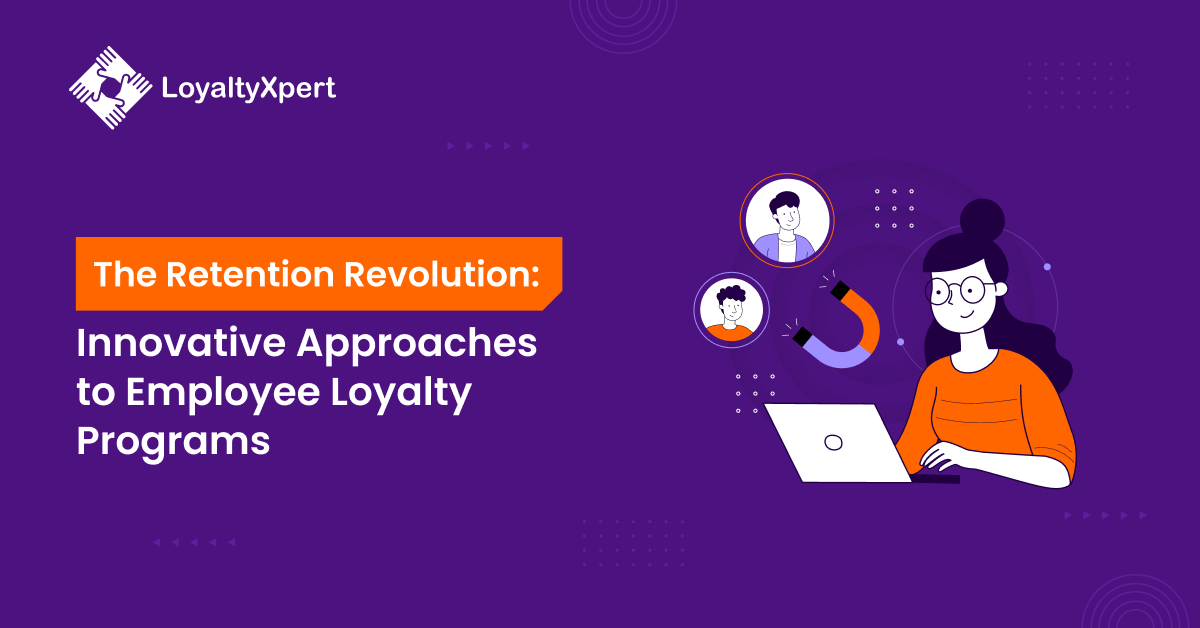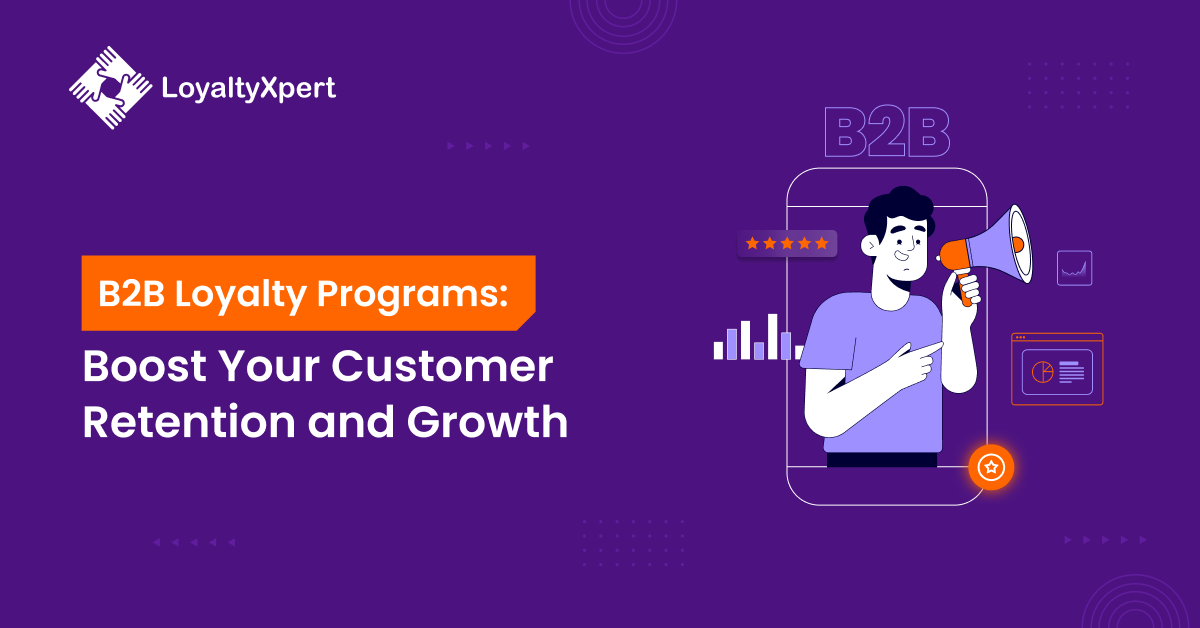
The Retention Revolution: Innovative Approaches to Employee Loyalty Programs
Author
admin
Published on:
Aug 5, 2024
Table of Content
See How Our Loyalty Program Can Help You.
Let us guide you through our product features with Loyalty Experts
A talented, capable, and stable workforce is the bedrock of businesses that are successful and thriving. However, changing employee expectations, shift in work culture, technology, and various other factors have left business across the globe grappling with high employee attrition. Companies operating in regions like the Middle-east where there is no dearth of good work opportunities are at a higher risk of employee attrition.
We are all aware of the “Great Resignation’ momentum that happened in 2021 in the USA. The momentum did have a ripple effect on other locations too. However, business owners learned their lessons quickly and have worked on effective strategies to woo employees back and ensure they stay. One such move that has played a key role is employee loyalty programs. In this blog, we deep dive into what drives employee loyalty and how a well designed and easy to access employee loyalty program can help organizations retain employees.
Let’s begin with understanding what employee loyalty programs exactly entail.
Understanding Employee Loyalty Programs
In the modern workplace employee loyalty programs are more than just occasional bonuses/perks/or a gift on work anniversary and birthdays. Today employee loyalty programs are a strategic tool which organizations use to engage, reward, and retain employees. It is a structured approach towards the creation of loyalty through continuous alignment of employee motivation to organizational goals.
New-age employee loyalty incentive programs must resonate with employees at a psychological and emotional level and foster a sense of attachment to their workplace. These programs should facilitate trust, mutual respect, and a strong emotional connection between an organization and an employee.
A deep understanding of what drives employee loyalty is therefore imperative to build an employee loyalty program that makes an impact. Let’s explore the key drivers of employee loyalty.
What Drives Employee Loyalty?
A number of elements come together to create an employee’s sense of loyalty:
Recognition and Reward: It is human for anyone to expect appreciation and recognition for their efforts and good work be it in the professional or personal space. Recognizing your employees’ contributions through a formal awards ceremony or a simple ‘thank you’ on a public forum makes a big difference in morale and loyalty. Employee reward initiatives to complement this appreciation goes a long way in driving employee loyalty.
Career Development: The provision of growth and development opportunities is another key loyalty driver. Employees who have a clear roadmap of their growth in the company are more likely to stay.
Work-Life Balance: Flexible working conditions and work-life balance are greatly appreciated in cultures like the Middle East, where family and community are an integral part of day-to-day life.
Corporate Culture: If the corporate culture is such that employees feel included and supported, then they will belong. If the values of employees are shared by the organizations and a good working atmosphere is provided, employees will be loyal to such organizations.
Employee Empowerment: Empowering employees to have a say in decision-making and providing autonomy to take decisions for their team are effective strategies to win employee loyalty.
Crafting an Employee Loyalty Program
While designing an employee engagement and rewards program, keep in mind what is meaningful to your team. A few must haves of modern employee loyalty programs are:
Personalized Incentives: Offer incentives in the form of rewards depending on personal preferences. There can be some employees who prefer a financial bonus, whereas others are more interested in having time off or more professional development time. Look into such employee loyalty program ideas that would serve diverse needs.
Continuous Feedback: Regular check-ins and feedback sessions allow employees to be heard and valued. This also gives management an opportunity to identify potential problems and proactively resolve them before they become a serious threat.
Clear Communication: Clearly communicate the loyalty program’s goals, rewards, and expectations to employees to build trust, encourage participation, and foster ownership. Transparency drives engagement and motivation.
Diverse Reward Options: Offer a diverse range of rewards that cater to varied interests and needs, ensuring something for everyone. This includes wellness initiatives for physical and mental well-being, travel vouchers for exploration and relaxation, professional development courses for career advancement, and other incentives that appeal to different passions and priorities, making the program inclusive, engaging, and meaningful.
Link Rewards to Performance: Directly tie rewards to performance, making it clear that incentives are earned through achievement. This transparent connection fosters fairness, motivation, and a sense of accomplishment, driving employees to take ownership of their work and strive for excellence.

Ways to Encourage Participation in Loyalty Programs
No matter how brilliantly an employee loyalty program is designed, it serves no purpose if it fails to engage your employees. A successful loyalty program is one in which your employees participate wholeheartedly. But here’s the thing: getting people actively involved in any program can be an uphill task. But by employing the below mentioned. strategies you can increase employee participation in loyalty programs.
Involve employees in the planning phase: As you are building the program, get their ideas. This might create a sense of ownership and will make them more invested in the idea.
Program promotion: Publicize the program through regular internal communications, including newsletters, company groups, internal website and communication network. Share examples of successes within these communications. Employee engagement activities, such as workshops or meetings, can also be used to educate employees about the program and its benefits.
Gamification: Include exciting and competitive game features, such as leaderboards and a point system, to encourage participation.
Ease of use/accessibility: A loyalty program and its rewards should be simple to use and access. Employees do not want to have to go through lengthy forms, complex interfaces, and a series of permissions/approvals to rightfully claim the fruit of their hard work.
Regular Refreshes: Maintain the program’s novelty by periodically changing the recognition standards and awards. This will keep the program from going stale and employees interested.
Why Your Organization Needs an Employee Loyalty Program
Investment in an employee loyalty program is not a choice but a strategic imperative. Here’s why:
Reduced Turnover: A loyalty program can reduce turnover by incentivizing partners to continue doing business with your company, rather than switching to a competitor. Schneider Electric’s Partner Program loyalty program offers benefits like dedicated support, training, and rewards to its partner businesses.
Increased Productivity: A loyalty program can increase productivity by providing partners with the tools, training, and resources they need to succeed. Intel’s Partner Alliance loyalty program offers benefits like technical training, marketing support, and sales tools to its partner businesses.
Enhanced Reputation: A loyalty program can enhance a company’s reputation by demonstrating its commitment to its partners’ success. Cisco’s Channel Partner Program loyalty program offers benefits like training, support, and rewards to its partner businesses.
Encourages Team Spirit: A loyalty program can foster a sense of community and teamwork among partners, leading to increased collaboration and joint success. Microsoft’s Gold Partner Program loyalty program offers benefits like training, support, and rewards to its partner businesses.
Cultural fit: In the Middle East, there is no clear boundary between personal and professional relationships. A well-implemented loyalty program will help to adjust the corporate culture with local values and improve overall satisfaction among employees.
The Benefits of Employee Loyalty Program
There are manifold benefits of an employee loyalty program:
- Employee Retention: The retention of skilled employees saves the organization the time and cost associated with recruiting and training new employees.
- Cost Reduction: High turnover of employees is costly. Loyalty programs can reduce such costs by keeping them engaged and committed.
- Boosted Morale: This keeps morale high, which has great implications for the general atmosphere and productivity at the workplace.
- Higher Engagement: Engaged employees will do more in their jobs to contribute to the firm’s success.
- Competitive Advantage: Companies that have effective loyalty reward programs create a uniqueness in the marketplace that helps firms attract good people and retain others.
Steps to Creating a Successful Employee Loyalty Program
An effective employee loyalty program requires proper design, planning, and implementation. The steps are enlisted herein below:
- Identification of objectives: The objectives or targets to be achieved through the program need to be spelt out. It could be in the form of reduction in attrition rate, productivity enhancement, or betterment of the satisfaction level of the employees.
- Understand what matters to your employees: While designing the program, learn from employee surveys or focus groups what really motivates them and what they would appreciate in a loyalty program.
- Program Design: Based on your research, develop a program that will support organizational goals and employee preferences.
- Clearly Communicate: Clearly communicate all the details of the program—how it works, the rewards available, and how an employee can take part in the program.
- Launch and Promote: Launch the program with an internal marketing campaign to ensure every employee is aware of the program. Keep it top of mind by using multiple channels.
- Monitor and Adjust: Check the program frequently, and make relevant changes that are aligned with employee feedback and participation rates.
Wrapping Up
An employee reward scheme can be a powerful tool for motivating employees and enhancing staff retention. If you understand the drivers of loyalty, then embed the key elements within your program and never stop promoting and enhancing it, you will make certain that your team feels valued and appreciated in the workplace. This not only reduces turnover but also increases productivity and enhances your company’s brand as an employer of choice.
In case you need to establish or improve your employee loyalty scheme, LoyaltyXpert will help with individual solutions that are most appropriate for your business and retain the best talent with a loyal, highly engaged workforce. Avail our free trial and demo today!
FAQs
1. What are the key components of an effective employee loyalty program?
An effective employee loyalty program should include personalized incentives, continuous feedback, clear communication, diverse reward options, and a strong link between performance and rewards. LoyaltyXpert offers tailored solutions to help you design a program that includes all these components, ensuring it resonates with your team and drives participation.
2. How can I increase employee participation in our loyalty program?
Increasing participation involves involving employees in the design process, promoting the program regularly, incorporating gamification, ensuring easy access, and keeping the program fresh with regular updates.
3. Why is it important to align the loyalty program with business goals?
Aligning the loyalty program with business goals ensures that employee rewards are tied to actions that drive organizational success.
4. How can I measure the success of my employee loyalty program?
Success can be measured through employee feedback, participation rates, and key business performance metrics.
5. What if my current loyalty program isn’t delivering the expected results?
If your current loyalty program isn't achieving the desired results, it may need a redesign or better alignment with employee needs and business goals. LoyaltyXpert specializes in analyzing existing programs and providing customized solutions that enhance engagement, increase retention, and drive overall success.
FAQs
1. What are the key components of an effective employee loyalty program?
An effective employee loyalty program should include personalized incentives, continuous feedback, clear communication, diverse reward options, and a strong link between performance and rewards. LoyaltyXpert offers tailored solutions to help you design a program that includes all these components, ensuring it resonates with your team and drives participation.
2. How can I increase employee participation in our loyalty program?
Increasing participation involves involving employees in the design process, promoting the program regularly, incorporating gamification, ensuring easy access, and keeping the program fresh with regular updates.
3. Why is it important to align the loyalty program with business goals?
Aligning the loyalty program with business goals ensures that employee rewards are tied to actions that drive organizational success.
4. How can I measure the success of my employee loyalty program?
Success can be measured through employee feedback, participation rates, and key business performance metrics.
5. What if my current loyalty program isn’t delivering the expected results?
If your current loyalty program isn't achieving the desired results, it may need a redesign or better alignment with employee needs and business goals. LoyaltyXpert specializes in analyzing existing programs and providing customized solutions that enhance engagement, increase retention, and drive overall success.


